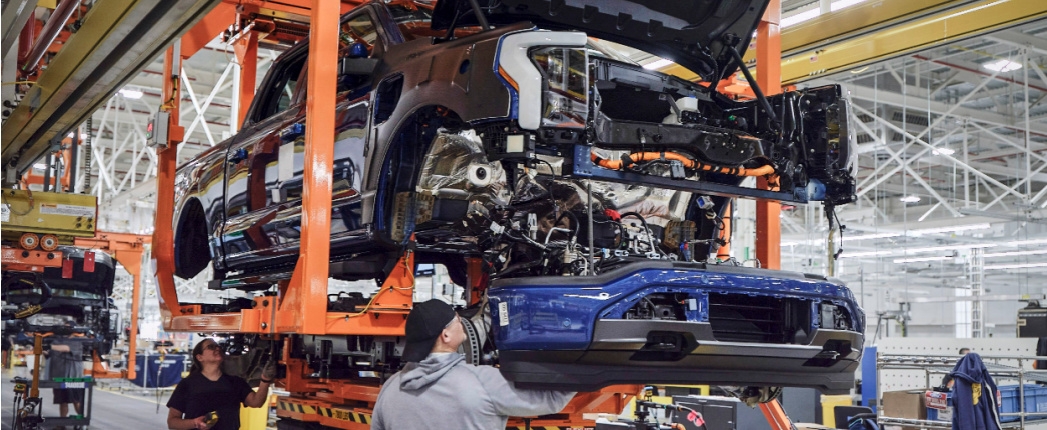
Although vehicle manufacturers’ transition to electric vehicles manufacturing is expected to reduce metalworking fluids consumption, it is also expected to bring some growth opportunities, according to findings highlighted in a Kline & Co. webinar last week.
“There is some window of opportunities for different formulators for specific applications related to machining of specialty parts inherent to battery electric vehicles,” Sharbel Luzuriaga, industry manager in Kline’s energy practice, said during the May 16 webinar on its recently published report, “EV Manufacturing: Exploring the Impact on Metalworking Fluids.” For example, he said, that includes machining of newer materials, such as copper, aluminum and stainless steel, along with more use of cold forming processes.
The production of batteries and power electronic components will require formulation of specialty metalworking fluids that address the specific needs for such applications, he added, including for battery casings. New demand for metalworking fluids is expected to emerge for electric motors manufacturing, he added.
Another implication is the emerging need for coating applications for the rotors and stators in electric motors. In an electric motor, the stator produces a rotating magnetic field when an electric current flows through its coils. “There are other specific applications that could be emerging,” Luzuriaga said. “When dealing with EV electric or electronic components of the car, there are specialty and niche coating applications that could be used in manufacturing of rotors and stators for electric motors.”
Luzuriaga explained that the move to EVs brings significant changes to vehicle powertrains and drivetrains that impact demand for metalworking fluids despite limited changes in car body manufacturing. The impacts differ, depending on the vehicle parts involved, and on the differences between hybrid electric vehicles and battery electric vehicles.
Kline projects that in terms of intensity in metalworking fluids consumption, the transition to manufacturing engines for EVs will have the most significant impact, especially in battery electric vehicles, followed by drivetrains. Most have at least one electric motor and sometimes two, but no combustion engine or engine block. “We have estimated it could be about 30% lower, compared to an internal combustion engine,” in terms of metalworking fluids consumption, Luzuriaga said.
The impact on such consumption when manufacturing hybrid electric vehicle engines is less pronounced because they still sport smaller internal combustion engines. “Hybrids will have a much more complex powertrain,” he noted. “For hybrids we don’t expect there will be a decline as pronounced as with electric vehicles” in metalworking fluids consumption.
On the drivetrain side, Luzuriaga noted, hybrids have a more complicated drivetrain, with more parts than ICE vehicles. By contrast, BEVs have a simple drivetrain system with fewer parts, compared to ICE vehicles.
Kline found that among the different metalworking fluid types, removal fluids are projected to experience the biggest decrease in consumption from the transition to EVs. “Overall, what we’re estimating is that removal fluids, on average, account for 60% of the overall metalworking fluids demand, and it is projected to be the most affected by this shift towards battery electric vehicles,” Luzuriaga said. He noted there are huge amounts of removal fluids used in machining of key components for the engine box, cylinder box, gears, rings, exhaust pipes and other ICE components. Removal fluids will not be necessary in production of those auto parts for BEVs, he added.
In contrast, forming fluids could see a certain increase for the shorter term, though Kline projects this not to be the case in the longer term, he noted. Such fluids will be needed in manufacturing of certain components in EV engines, including battery casings. Wiring fluids will also be needed for production of copper wires, he added.
He said that two smaller metalworking fluids categories – protecting fluids and treating fluids – are expected to experience a slight decrease in consumption over time in the transition to EV manufacturing.